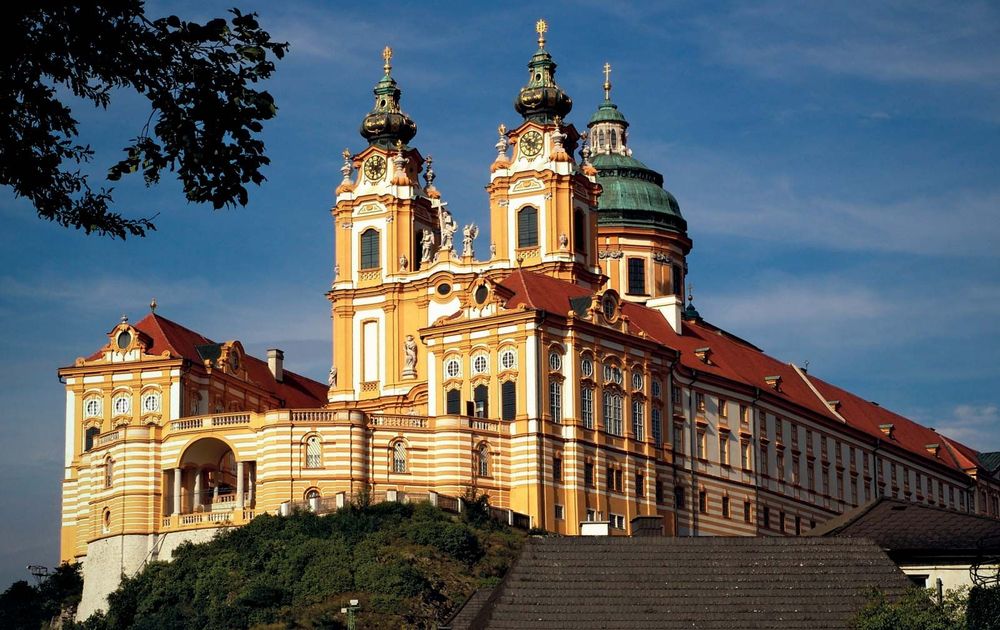Erected on the banks of the Danube, the Austrian Melk Abbey pleases the eye with its impressive yellow, white and orange buildings. If you look from the other side of the river, the old Benedictine monastery seems impregnable, but after getting acquainted with its courtyards, rich halls, library and church, everyone who enters here understands that the religious spirit has been the absolute master here for 1000 years.
Between Vienna and Salzburg, the number one motorway and the Danube meander slowly through a charming rural landscape. The small village of Melk fits perfectly into the romantic landscapes of this area. In 976, it was presented to Marquis Leopold the First of the Babenberg dynasty, so that he would organize protection here from the attacks of eastern Hungary. The Melk Fortress will serve as a refuge for this family for 100 years.
Leopold II, who gets tired of being away from the royal court, will give his property into the possession of the monks, who will create a new abbey here. In the 12th century, they opened a monastic school here, collecting a unique library, which, in due time, Umberto Eco would use when creating the novel “The Name of the Rose”, and as a token of appreciation, one of the main characters was named Adso von Melk.
Tours of Melk Abbey have the same route: Benedictine Hall and Prelates’ Court, Imperial Staircase and Imperial Rooms, exhibition halls, Marble Hall, Terrace, Library, Church and Kalman Square. The trips end in the abbey gardens, where the magnificent restaurant reminds that of the few sources of income, tourism plays the most important role.
From the side of the small town, the entrance to the abbey passes through the so-called “beggars’ staircase”, which leads into the portal where the statues of Saints Leopold and Kalman are located. Saint Kalman is an Irish monk who was sentenced to death in 1012, mistaken for a spy. It was he who became the first patron of the monastery. In the wide courtyard that stretches beyond the gate, you can see the eastern facade of the abbey and the most exciting building of the monastery – the Babenberg Tower, built in the Middle Ages.
The Melk Abbey Library contains about 100,000 volumes, 750 incunabula printed before 1500, 1,700 works from the 16th century, 4,500 works from the 17th century and about 18,000 from the 18th. Of the 1800 manuscripts, the most significant and valuable are the writings of the 9th century.
Hundreds of thousands of tourists visit Melk annually. These are only official figures, and behind them lies one of the greatest and most beautiful monasteries in the world: the guardian on the Danube and a refuge for faith.












